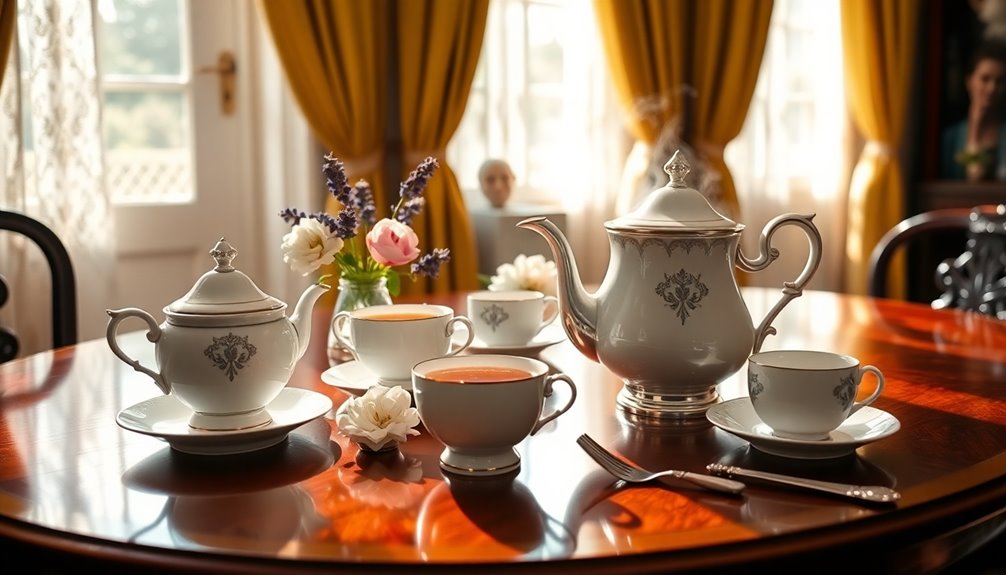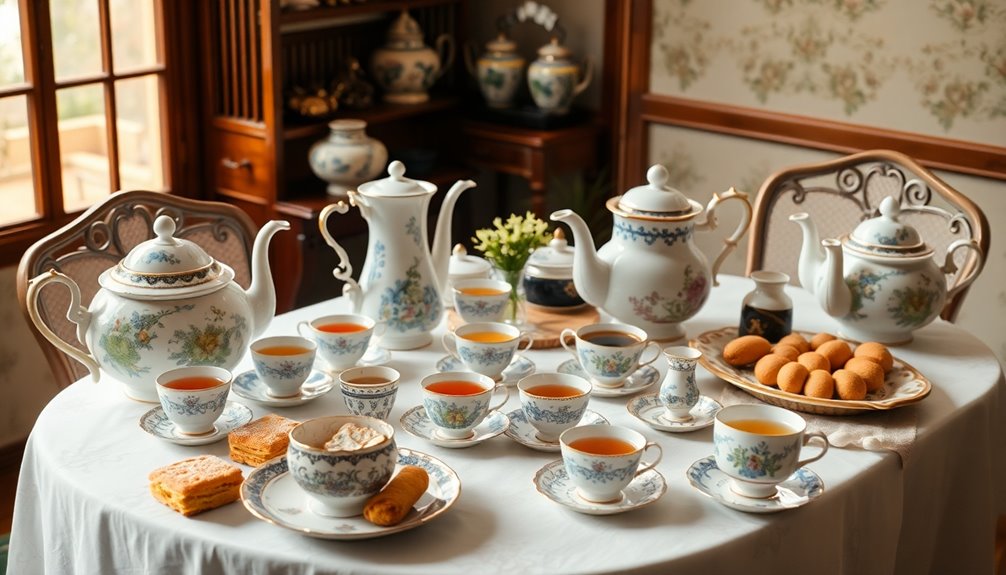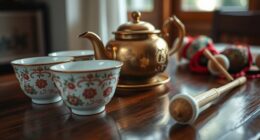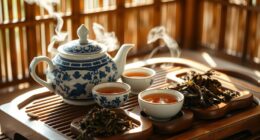To impress your guests with flawless tea etiquette, focus on key elements. Start with a proper three-tiered stand: finger sandwiches on the bottom, scones in the middle, and sweets on top. Remember to pour tea for your guests, filling their cups three-quarters full. For scones, never cut them with a knife—break them by hand to preserve their texture. Also, get the pronunciation right; it's crucial for showing respect. Dress smartly, and don't forget to provide clotted cream and jam. Mastering these details makes your gathering memorable, and there's so much more that can elevate your tea experience!
Key Takeaways
- Understand the distinction between afternoon tea and high tea to set the right expectations for your gathering.
- Adhere to the dress code, opting for smart casual or business casual attire to create a polished atmosphere.
- Serve the food in the correct order: start with finger sandwiches, followed by scones, and finish with sweets.
- Use proper scone etiquette by breaking them by hand and spreading toppings with a knife to enhance the experience.
- Be mindful of tea pouring techniques, filling cups three-quarters full and using a strainer for an elegant presentation.
Introduction
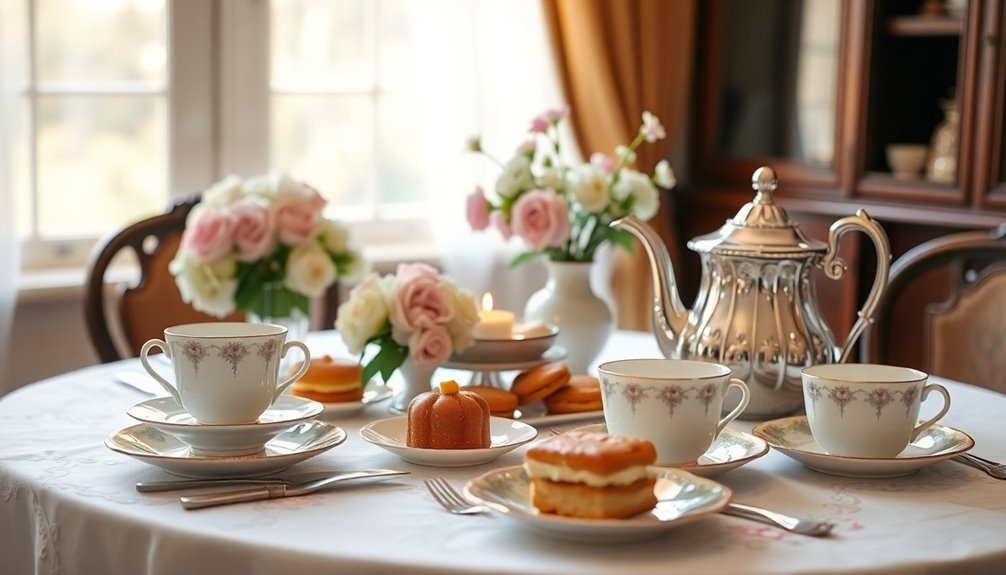
When hosting a tea gathering, mastering the nuances of tea etiquette can transform a simple event into an elegant experience. Understanding the distinction between afternoon tea and high tea is essential for setting the right expectations.
Dressing according to the dress code—smart casual or business casual—shows respect for this British tradition and helps impress your guests.
Good manners play a crucial role in creating a warm atmosphere. Familiarize yourself with proper napkin usage; placing it on your lap and using it to dab your mouth reflects your attention to detail.
To enhance your experience, follow the order of eating: start with finger sandwiches, then savor scones, and finish with sweets. This sequence not only showcases your understanding of tea etiquette rules but also elevates the flavor of each item.
British Afternoon Tea Origins
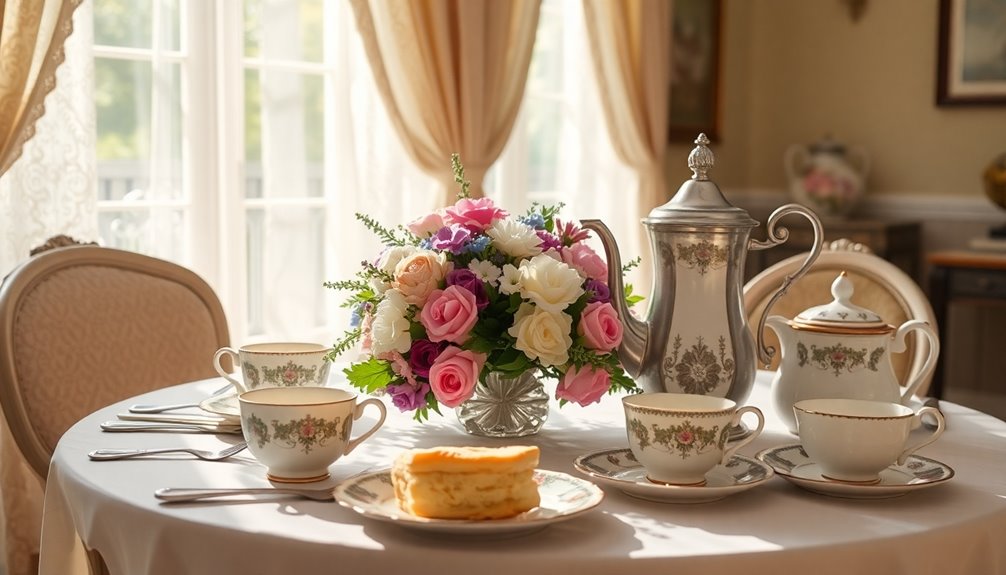
Originating in the early 19th century, afternoon tea emerged as a delightful solution to the long stretch between lunch and dinner. It was introduced by Anna, the Duchess of Bedford, who found herself famished during the gap. This practice quickly became a fashionable social event among the upper class, solidifying its place in British culture.
During the Victorian era, afternoon tea evolved into an elaborate tea party, often featuring a delightful assortment of finger sandwiches, delectable pastries, and, of course, scones served with clotted cream and jam.
Typically enjoyed between 3 PM and 5 PM, 4 PM became the ideal time for this leisurely social gathering, allowing friends and family to connect over tea and treats.
It's essential to note the distinction between afternoon tea and high tea. While afternoon tea offers a light meal in the afternoon, high tea is a more substantial evening meal, associated primarily with the working class.
Understanding these nuances will help you appreciate the rich history of afternoon tea and its significance in British culture, ensuring you impress your guests with your knowledge and etiquette at your next tea party. Additionally, the practice of sharing tea fosters emotional resilience, as it provides a comforting space for connection and support among friends.
Scones Should Not Be Cut

Understanding the nuances of afternoon tea extends beyond just the timing and treats; it also encompasses the proper way to enjoy each item, particularly scones.
When it comes to this traditional treat, etiquette dictates that you should never cut them with a knife. Instead, break scones by hand into bite-sized pieces. This method preserves their delicate texture and integrity, ensuring you get the full experience.
Cutting a scone can lead to a dry, crumbly texture, detracting from your enjoyment. The proper way to enjoy a scone involves separating the top from the bottom, using a knife solely for spreading jam and cream.
Scone Pronunciation Impacts Perception
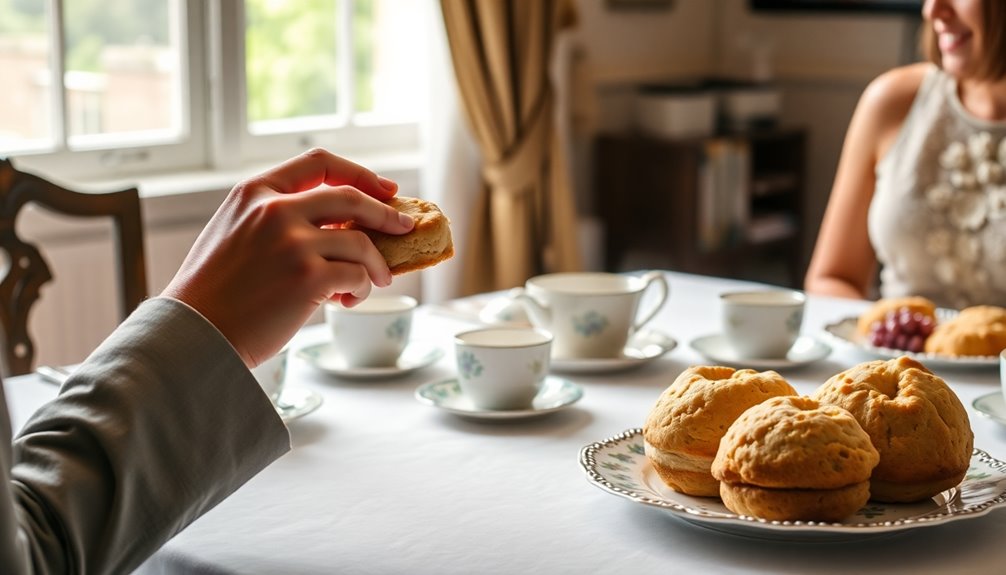
The way you pronounce "scone" can significantly shape how others perceive your grasp of tea etiquette. In social settings, the distinction between saying "scone" as it rhymes with "gone" or "cone" often reflects cultural differences in British tea traditions. Mispronouncing it might lead to misunderstandings, potentially diminishing the sophistication of your afternoon tea experience.
Using the correct pronunciation demonstrates your familiarity and respect for British tea culture, enhancing your credibility among guests. Proper pronunciation signals attention to detail, which is vital in formal tea environments. When you articulate "scone" correctly, you elevate the overall ambiance and show that you've invested time in understanding regional customs.
Awareness of local pronunciation preferences can also foster better connections with your guests, making them feel appreciated and understood. This sensitivity to cultural nuances is essential for creating an inviting atmosphere at your gathering. Additionally, understanding cultural influences on dining etiquette can further enhance your hosting skills and the overall experience for your guests.
Scone Toppings Spark Debates
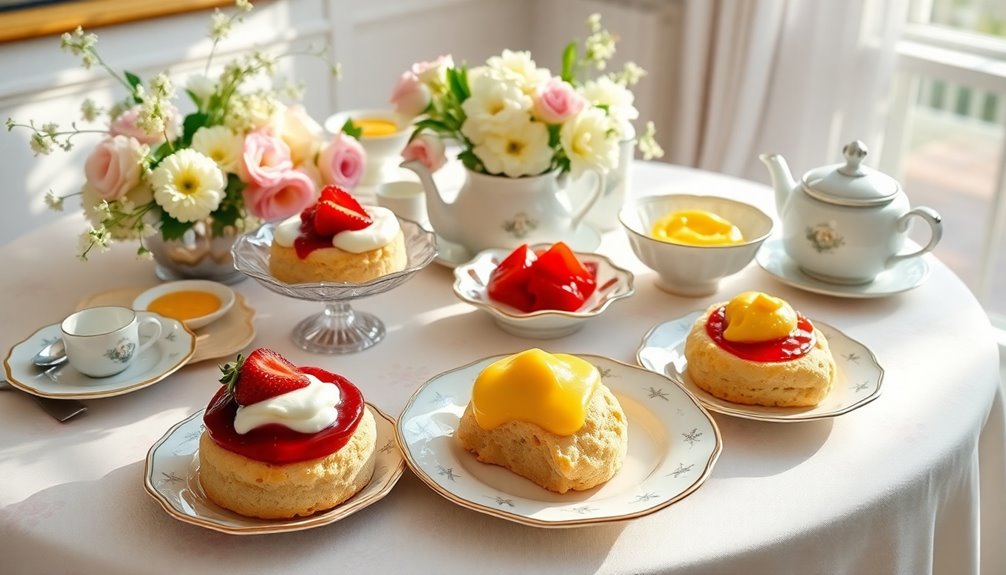
When it comes to scone toppings, debates can spark lively conversations among tea enthusiasts. The two main methods—Devon and Cornish—create a divide: Devon spreads clotted cream first, while Cornish puts jam on first. This ongoing debate not only reveals personal preference but also enriches the social atmosphere of your afternoon tea.
Proper etiquette dictates that you should break scones by hand rather than cutting them with a knife. Additionally, it's best to spread toppings on individual pieces instead of reassembling the scone after applying the spreads. Make sure to provide both clotted cream and jam to cater to your guests' varying tastes, showing respect for traditional customs.
You might find that discussions about whether to serve cold or hot milk with tea parallel the scone topping debates. Each choice reflects individual taste and can lead to engaging conversation.
Practical Applications
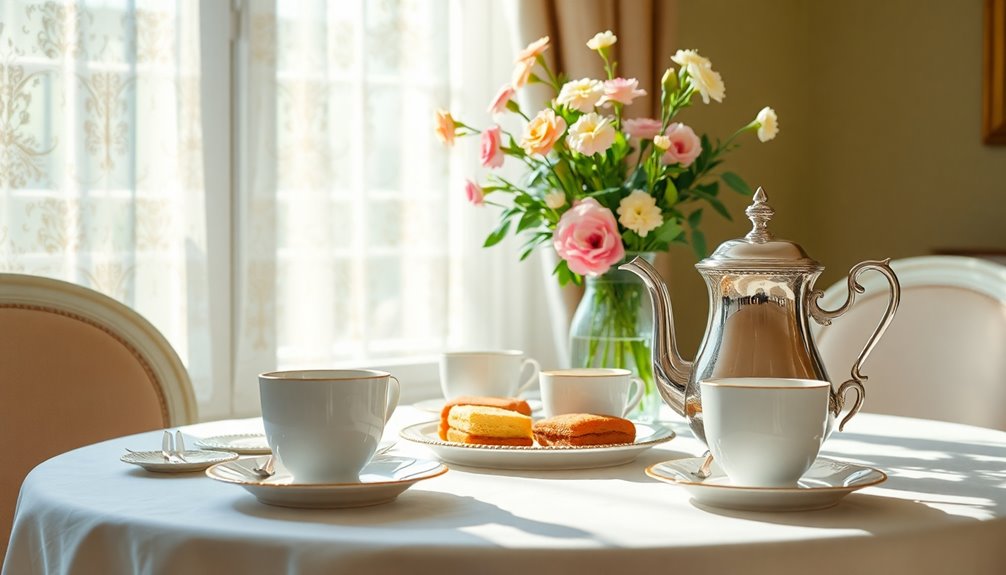
At an afternoon tea, practical applications of etiquette can elevate the experience for both hosts and guests. Start by ensuring everyone adheres to the dress code—women in dresses or slacks and men in trousers and collared shirts. This sets a respectful tone for the gathering.
When organizing your three-tiered stand, place sandwiches first on the bottom tier, followed by scones in the middle, and sweets on the top. This arrangement enhances presentation and flow during the tea service. Consider using essential oils to create a calming atmosphere that complements the elegant setting. Additionally, ensure that your venue has adequate HVAC systems to maintain a comfortable temperature throughout the gathering.
As the host, make it a point to pour tea for your guests. Fill their cups three-quarters full and use a strainer for loose leaf tea to maintain order. Providing a HEPA filter technology air purifier can significantly improve air quality, creating a more pleasant environment for your guests.
Serve scones by breaking them into pieces instead of cutting them, and don't forget the clotted cream and jam; let guests spread according to their preference. Additionally, consider providing an air purifier to enhance the ambiance by ensuring clean air during the gathering. Regular maintenance of your air purification system ensures optimal performance, contributing to a more enjoyable atmosphere.
Conclusion
By mastering these tea etiquette tips, you'll elevate your hosting skills and impress your guests. Remember the rich history of British afternoon tea, embrace the correct scone pronunciation, and navigate the toppings debate with confidence. When you serve scones whole and guide your guests through each aspect of the experience, you'll create a memorable atmosphere that celebrates the tradition of tea. So, put on your best smile, and enjoy the delightful moments you'll share!




